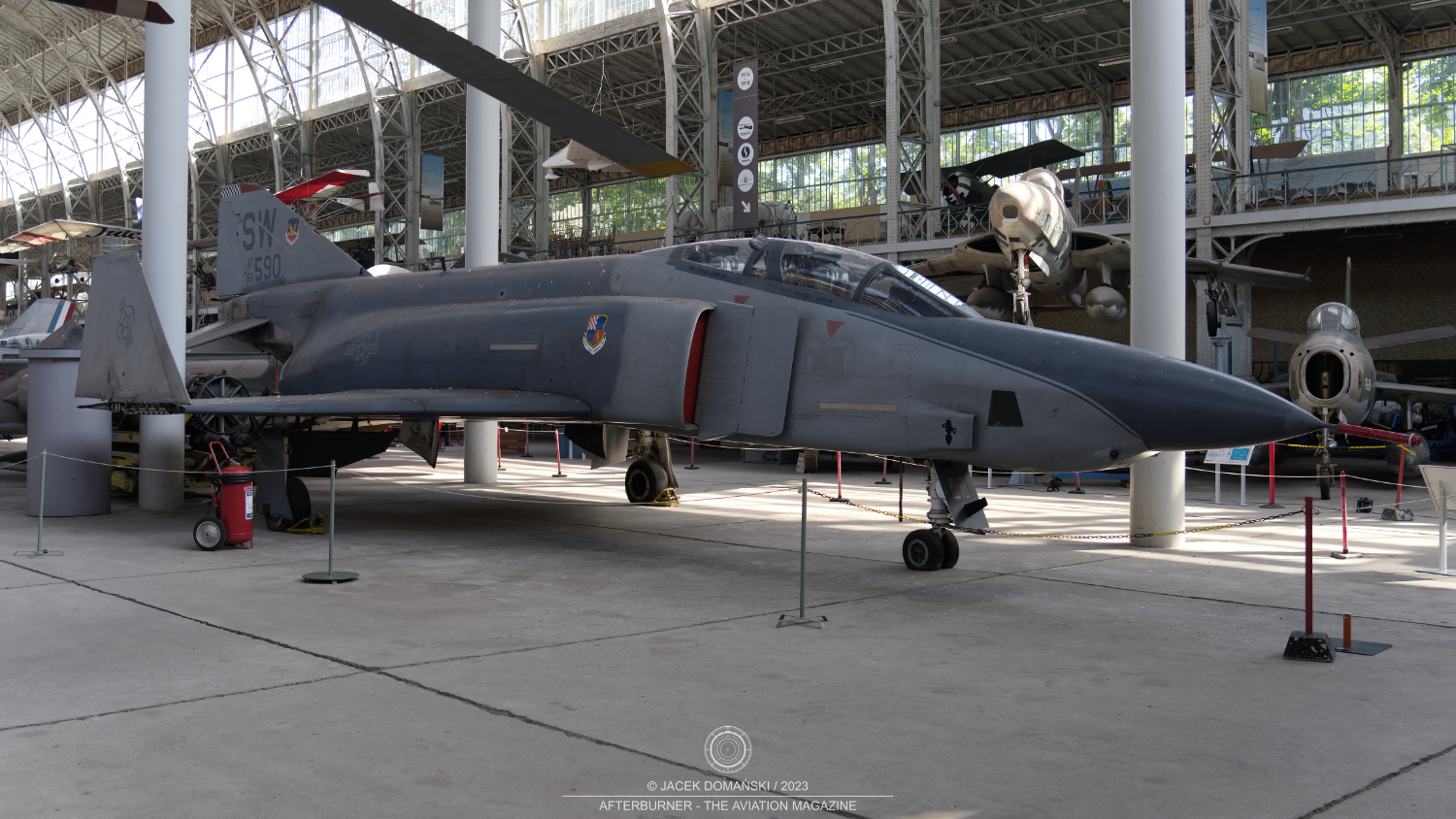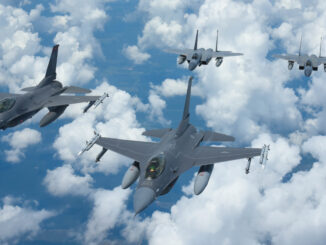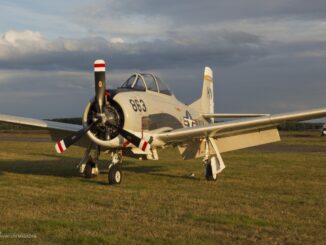 McDonnell Douglas RF-4C-39-MC Phantom II (c/n 3579, formerly 68-0590 of the United States Air Force), exhibited at the Royal Museum of the Armed Forces and Military History, Brussels, September 2023.
McDonnell Douglas RF-4C-39-MC Phantom II (c/n 3579, formerly 68-0590 of the United States Air Force), exhibited at the Royal Museum of the Armed Forces and Military History, Brussels, September 2023.
In the early 1960s, the American military authorities came to conclusion that operational capabilities of currently used McDonnel RF-101 Voodoo aircraft were limited. Therefore, the US armed forces needed new, more advanced tactical reconnaissance jet aircraft to enter the service in a short time.
In 1962, it was decided to use McDonnel Douglas F-4 Phantom II fighter as base for the new recon aeroplane and the development programme officially began. Prototype of the new aircraft, designated YRF-4C, performed its maiden flight on 9th August 1963.
The tactical reconnaissance version of the Phantom II was developed for both the USAF and the United States Marine Corps. The marine variant of the aircraft was initially designated F4H-1P and then RF-4B. The aircraft featured a stretched nose which accommodated smaller AN/APQ-99 radar and was equipped with slots for several types of cameras, infrared reconnaissance system and electronic countermeasure suite. The first production example of the RF-4B successfully completed its first flight on 12th March 1965.
The USAF variant of the aircraft, designated RF-4C, was initially equipped with the same radar as the marine variant but later replaced with AN/APQ-172 TFR (Terrain-Following Radar). It also featured a broader choice of cameras, including HIAC-1 Long Range Oblique Photography pod, equipped with ultra-long focal length camera made by General Dynamics. On 18th May 1964, the first production example of the RF-4C performed its maiden flight.
The 16th Tactical Reconnaissance Squadron became the first operational unit of the USAF to fly the new aircraft. In October of 1965, the Squadron and its RF-4Cs were deployed to Southeast Asia and opened its service log with missions over South Vietnam. Then, the reconnaissance Phantoms were used in several operations all over the world, until the First Gulf War. All the USAF RF-4C were retired by 1995.
The RF-4C reconnaissance aircraft was made in 503 examples in total, and 499 of them were operated by the USAF. A few RF-4C served with Israeli, South Korean and Spanish air forces, although the two latter countries received the used Phantoms, retired from the USAF.
Interesting fact is that, although the reconnaissance Phantoms were developed as unarmed aircraft, in final years of their service some of the RF-4Cs were modified to carry AIM-9 Sidewinder missiles, as well as upgraded to carry a nuclear weapon on the centre pylon.
The RF-4C featured within our Photo of the Week series, was manufactured in 1968 and then taken on strength with the USAF as 68-0590. The aeroplane was operational until 1990, when it was retired and taken over by the National Museum of the United States Air Force.
In 1991, the Phantom II was moved to Belgium on basis of the long-time loan agreement with the Belgian Ministry of Defence and exhibited at the Royal Museum of the Armed Forces and Military History in Brussels.
Currently, the RF-4C is being exhibited in livery of the 363rd Tactical Reconnaissance Wing from Shaw Air Force Base in South Carolina. For a very long time, the 363rd Wing was the central reconnaissance unit of the USAF, operating the RF-101, RF-4C, Martin RB-57A Canberra and Douglas RB-66 Destroyer aircraft. Most of the USAF tactical reconnaissance crews served or were trained in that unit.



